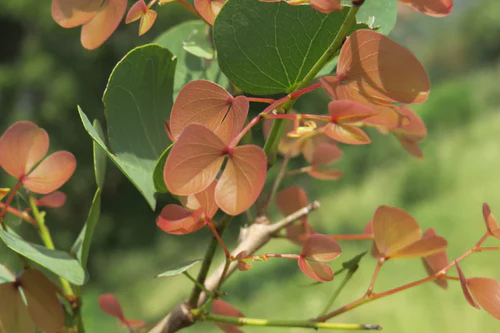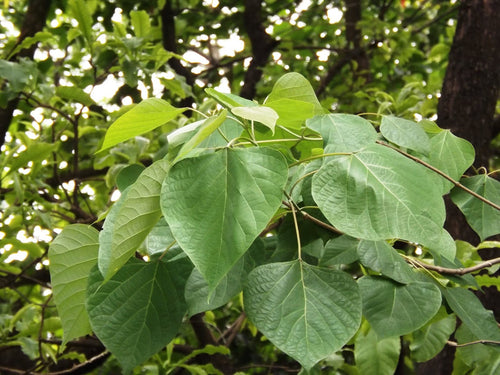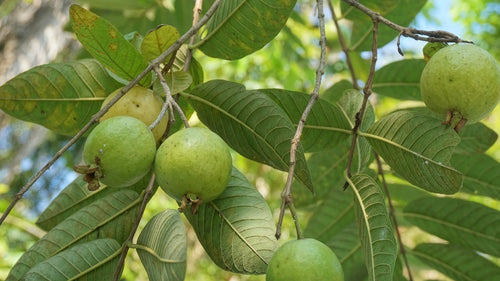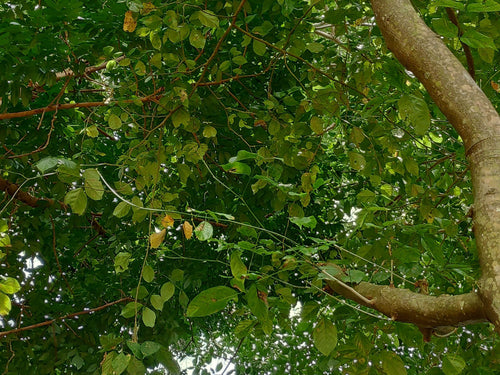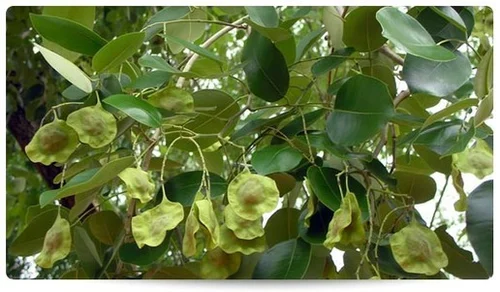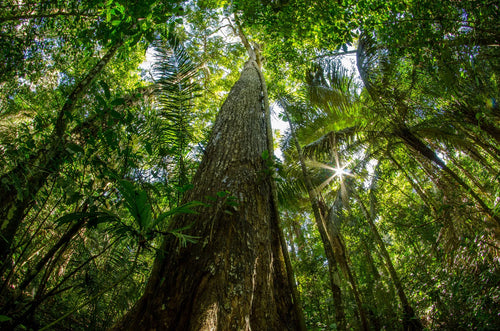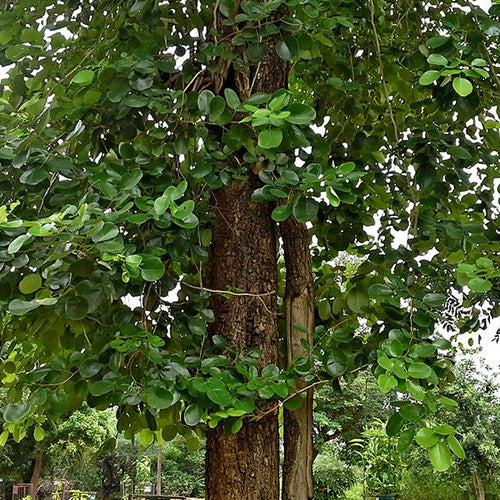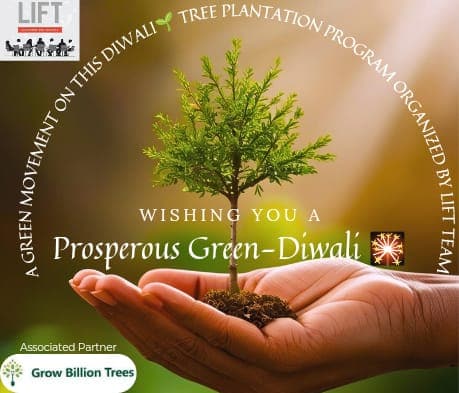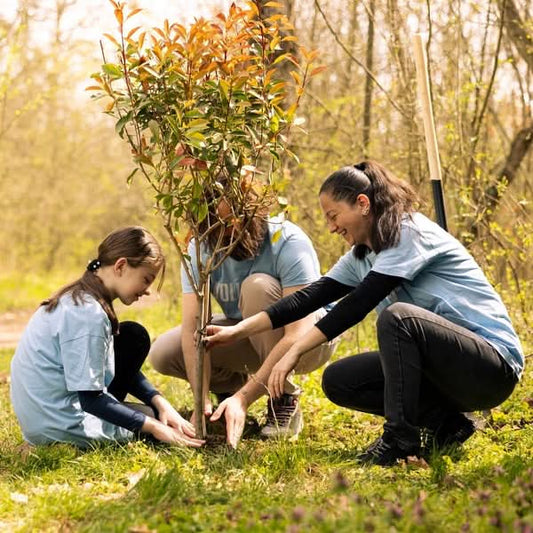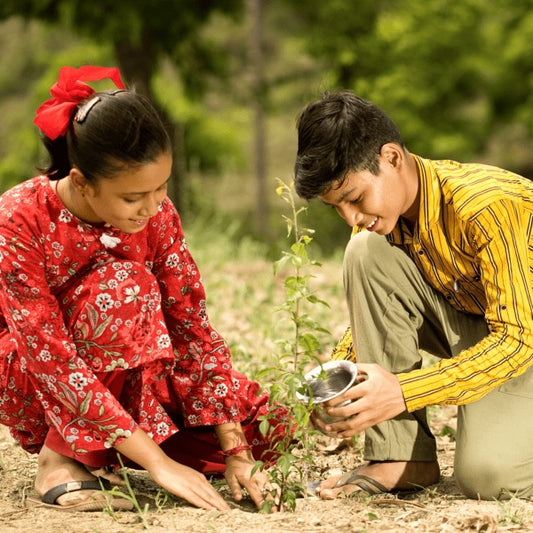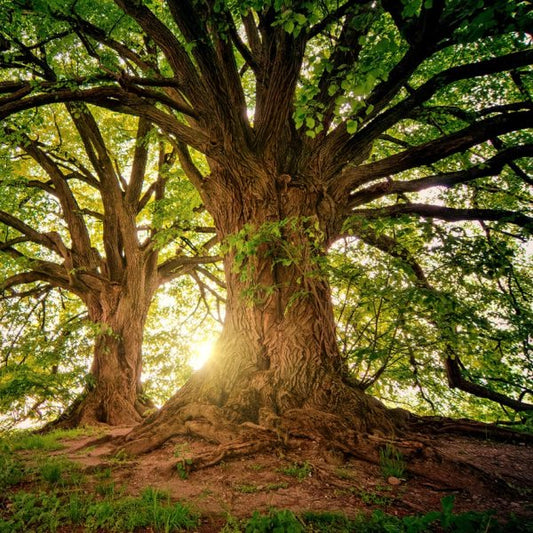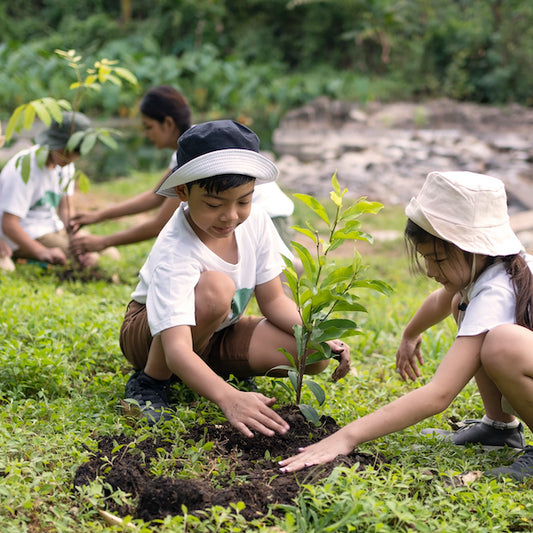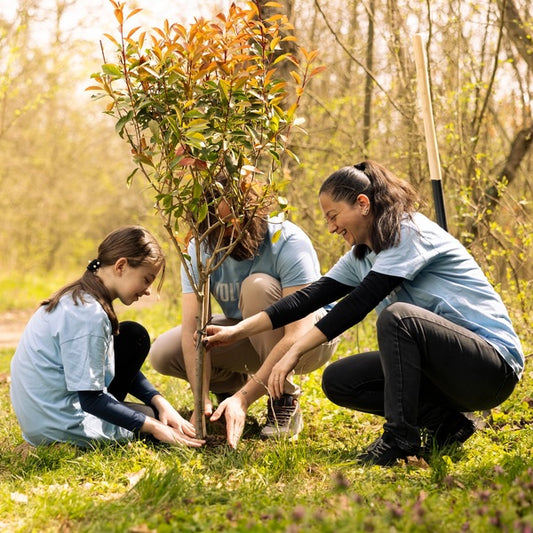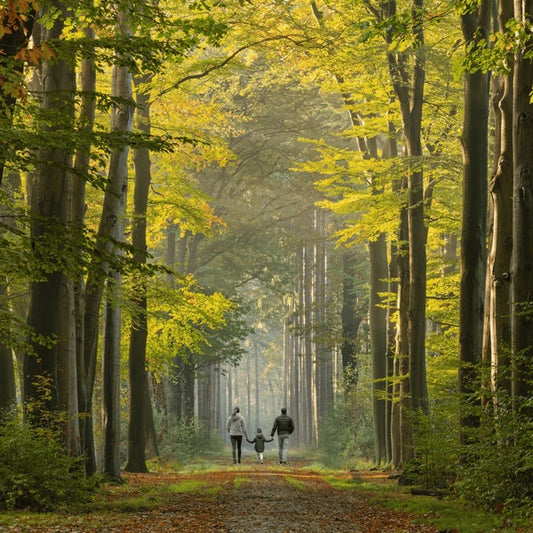Caterpillar's Legacy: A Learning forest in Kadambathur, Thiruvallur
Caterpillar has long been a global leader in innovation and engineering, driving progress and transforming industries for over a century. Its flagship Read more
Project Update 4
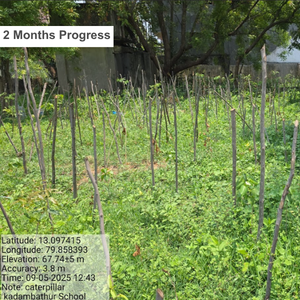













Project Update 3

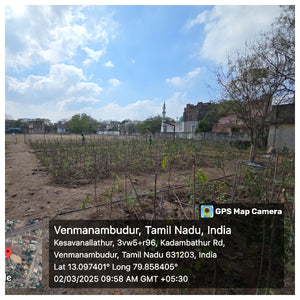
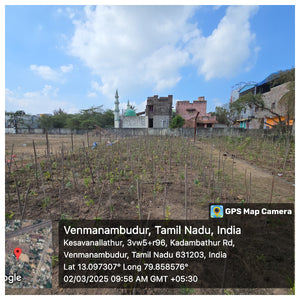
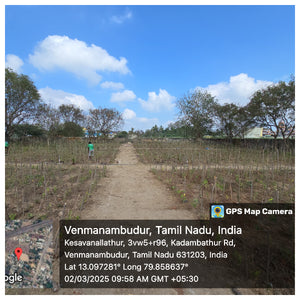
Project Update 2

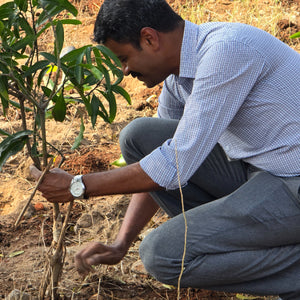
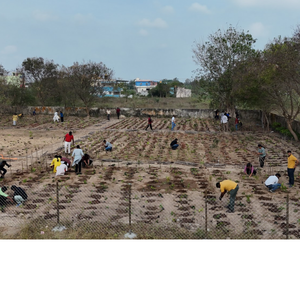

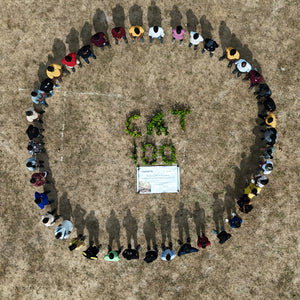
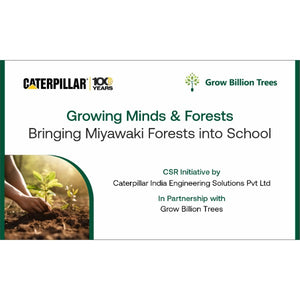
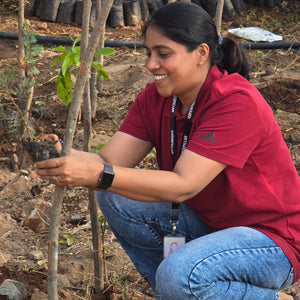
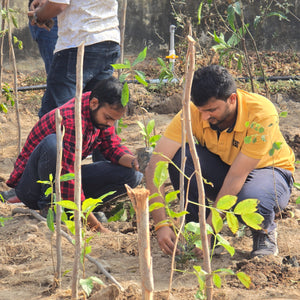
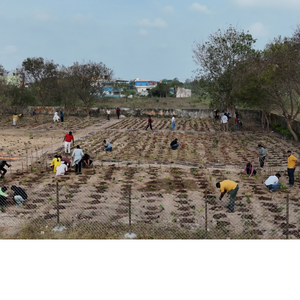
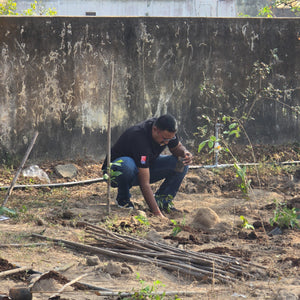
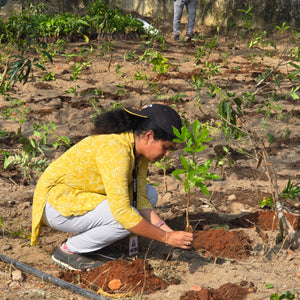
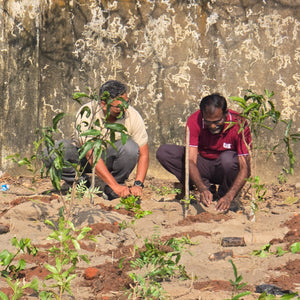
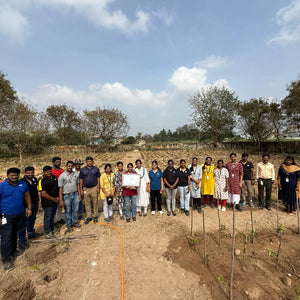
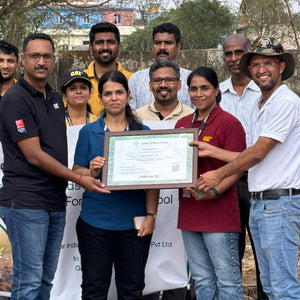
Project Update 1

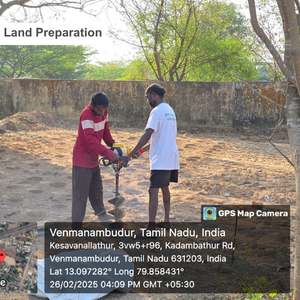
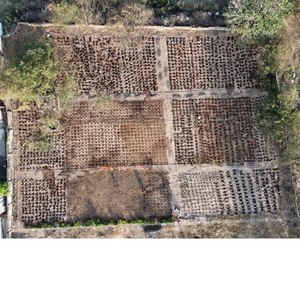
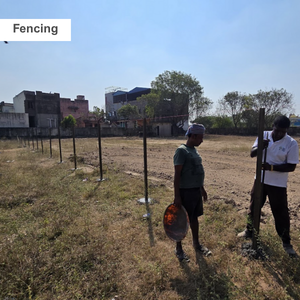
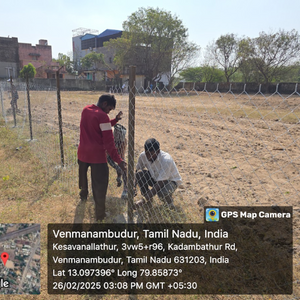
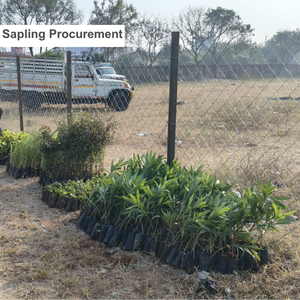
Digital Forest
Forest with 10,000 Trees planned
Want to plant your tree now?
Plant a Tree @ 299Caterpillar's Legacy: A Learning forest in Kadambathur, Thiruvallur
Caterpillar has long been a global leader in innovation and engineering, driving progress and transforming industries for over a century. Its flagship brand, Cat, is synonymous with quality, reliability, and resilience values that extend beyond machinery and engines to reflect a strong, ongoing commitment to sustainability. More than just a symbol of equipment, the Cat logo represents hard work, determination, and a resilient spirit, values that Caterpillar is now channeling into environmental stewardship.
In celebration of its 100-year milestone, Caterpillar has launched a large-scale afforestation initiative involving the plantation of 50,000 native saplings across 13 schools in Chennai, Thiruvallur, and Hosur. This transformative effort aims to create sustainable green spaces within educational institutions, fostering both ecological restoration and environmental awareness among students.
This initiative marks the establishment of a "Learning Forest" an innovative green space designed to integrate ecological restoration with environmental education. By creating living, breathing forests within school campuses, the project nurtures a hands-on learning environment where students can explore biodiversity, climate action, and sustainability in real time.
The plantation at Government Higher Secondary School, Kadambathur Road, Kadambathur, Thiruvallur is the third location under this initiative and involves the plantation of 10,000 native saplings using the Miyawaki afforestation technique. This dense, fast-growing forest will not only enhance the local ecosystem but also serve as a powerful educational tool, inspiring students to actively participate in environmental conservation.
The learning forest will also act as a natural green barrier, reducing noise pollution, regulating climate, and fostering biodiversity by attracting birds and pollinators. Its impact extends beyond tree planting it transforms the environment, creating a thriving ecosystem within the school premises.
Additionally, students will have hands-on involvement in tracking tree growth, measuring carbon absorption, and studying ecosystem development. This initiative blends classroom learning with real-world climate science, encouraging young minds to become environmental champions.
Through this project, Caterpillar reinforces its signature get-it-done attitude—this time, in service of the planet. As the company continues to build a better world, its efforts go beyond engineering machines to cultivating forests, nurturing knowledge, and shaping a more sustainable future.
Project Planning & Execution
No of Trees: 10,000
Plantation Location: Government Higher Secondary School, Kadambathur Rd, Kadambathur, Thiruvallur 631203
Plantation Duration: 24th February 2025 to 28th February 2025
Names of Species: Teak, Mahogany, Rosewood, Vengai, Sandalwood, Silver Oak, Poovarasam, Pungai, Magilam, Badam, Palaa, Maa, Guava, Naval, Sapota, Ara Nelli, Peru Nelli, Athi, Shenbagam, Sarakondrai, Rangoon Mali, Parijatham, Idly Poo, Sembaruthi, Arali, Maruthani, Nandhiyavattam, Yellow Arali, Colour Kakatan, Thulasi, Omavalli, Lemon Grass, Vettiver, Vallarai
Species Selection & Its Benefits:
The species selected for Caterpillar’s Learning Forest initiative were meticulously chosen to suit the local ecosystem and maximise ecological impact. A total of 10,000 trees were planted, comprising 34 diverse native species across Canopy, Tree, Shrub, and Ground layers—each playing a vital role in building a self-sustaining and biodiverse forest.
The selection includes Teak, Mahogany, Rosewood, Vengai, Sandalwood, Silver Oak, Poovarasam (Portia Tree), Pungai (Indian Beech), Magilam (Bullet Wood), Badam (Almond Tree), Palaa (Jackfruit), and Maa (Mango)—long-living canopy and emergent trees that aid in carbon sequestration, temperature regulation, and provide critical habitat for birds and other wildlife. These species form the structural backbone of the forest ecosystem, ensuring long-term ecological stability and climate resilience.
Fruit-bearing species such as Guava, Naval (Java Plum), Sapota (Chikoo), Ara Nelli (Gooseberry), Peru Nelli (Indian Gooseberry), Athi (Fig Tree), and Maa (Mango) support vital food webs by attracting pollinators, birds, and small mammals, while also enriching the school and local community with seasonal, nutritious produce.
Culturally and medicinally significant trees like Shenbagam (Champak), Parijatham (Night-flowering Jasmine), and Sarakondrai (Golden Shower Tree) foster community connection and preserve traditional knowledge systems. High-value species like Sandalwood also offer economic and ecological value, contributing to the long-term sustainability of the forest.
Shrubs and ornamental species, including Rangoon Mali (Rangoon Creeper), Idly Poo (Crossandra), Sembaruthi (Hibiscus), Arali and Yellow Arali (Oleander), Maruthani (Henna), Nandhiyavattam (Crepe Jasmine), and Colour Kakatan (Winter Jasmine) enhance aesthetic appeal, attract pollinators, and help stabilise the microclimate within the plantation area.
At the ground level, herbs and cover plants such as Tulsi (Holy Basil), Omavalli (Indian Borage), Lemon Grass, Vettiver (Vetiver), and Vallarai (Gotu Kola) play a crucial role in improving soil health, enhancing water retention, and offering natural pest control. Their medicinal and aromatic qualities further engage students in understanding the value of sustainable living and traditional healing practices.
Together, this thoughtfully curated mix of species supports the rapid development of a dense, multi-layered forest using the Miyawaki method. It boosts urban biodiversity, improves air quality, restores degraded land, and encourages environmental stewardship among students and the broader community, laying down deep roots for a greener future.
Beneficiaries Details
-
Target Population: Employees, stakeholders, students and staff of Government Higher Secondary School, Kadambathur, along with local community members of Kadambathur, Thiruvallur, Tamil Nadu.
-
Age Group: Inclusive of all age groups, ensuring broad community participation.
-
Gender: Inclusive of all genders.
-
Social & Economic Status: Open to all social and economic backgrounds, emphasising community involvement.
Planting Methodology and Its Advantages
Miyawaki Technique: The Miyawaki technique is a dense afforestation method that promotes rapid green cover using native plant species. It consists of rapidly growing vegetation that develops 10 times faster and becomes 30 times denser than conventional plantations. By closely planting a diverse mix of flora, it creates a self-sustaining ecosystem that requires minimal maintenance. This method enhances biodiversity, improves air quality, absorbs carbon dioxide, and restores degraded land. Due to its high-density plantation style, it is especially effective in urban areas, offering environmental benefits such as temperature regulation, noise reduction, and soil enrichment.
Four-Step Process of Planting a Miyawaki Forest:
1. Preparation and Analysis
- Site Analysis: Begin with a thorough analysis of the site, considering factors like soil type, water availability, and sunlight exposure. This analysis guides the selection of native plant species best suited for the location.
- Soil Preparation: Clear the area of weeds and debris. Loosen the soil by tilling and amend it with organic compost to enhance fertility and moisture retention.
2. Plant Selection and Planting
- Plant Selection: Choose native plant species that are fast-growing, drought-resistant, and indigenous to the region. Diversity is crucial to mimic natural forests and promote ecological balance.
- Planting Technique: Dig pits or trenches for planting saplings, ensuring each has enough space to grow. Plant at a high density, typically 3 to 5 times denser than traditional forests.
3. Care and Maintenance
- Mulching: Apply a thick layer of mulch around the saplings to suppress weeds, conserve moisture, and protect the soil from erosion. Mulch also enriches the soil as it decomposes.
- Watering: Initially, saplings need regular watering to establish their roots. Once established, they require less frequent watering, but regular monitoring remains essential.
4. Monitoring and Growth
- Regular Maintenance: Perform regular weeding, pruning, and pest control during the initial years. Miyawaki forests become self-sustainable as they mature but still require occasional maintenance.
- Monitoring: Keep track of the forest's growth and health, monitoring for signs of stress, disease, or pest infestations and taking timely action when needed.
Four Layers of a Miyawaki Forest
The Miyawaki method emphasizes creating a multi-layered forest that mimics natural forests to achieve rapid growth and high biodiversity. Here are the four layers typically found in a Miyawaki forest:
- Canopy Layer: This topmost layer consists of tall trees that provide the canopy. These trees are usually fast-growing species that can reach heights of 15 to 30 meters or more. They offer shade and protection to the layers below.
- Tree Layer: Beneath the Canopy layer is the tree layer, consisting of smaller trees and larger shrubs. These plants help fill in the gaps between the taller trees, contributing to the dense foliage that characterizes a mature forest.
- Shrub Layer: Below the canopy, the shrub layer includes smaller shrubs and bushes that provide additional structure and diversity to the forest. These plants play a vital role in attracting pollinators and providing habitat for various wildlife.
- Ground Layer: The lowest layer is the ground layer, comprising ground covers, ferns, and herbaceous plants. These plants help to retain moisture, suppress weeds, and protect the soil. They also contribute to the overall biodiversity by providing habitat for insects and microorganisms.


Each layer in a Miyawaki forest serves a unique purpose and contributes to the forest's resilience, biodiversity, and ecological functionality.
Advantages of the Miyawaki Technique
-
Faster Growth: Vegetation grows up to 10 times faster than conventional methods due to high-density planting, soil conditioning, and native species selection. It reaches maturity in 20-30 years instead of over a century, making it highly effective for ecological restoration.
-
Biodiversity Enhancement: The technique encourages a diverse mix of native species, supporting wildlife such as birds, insects, and small mammals, contributing to habitat restoration and ecosystem resilience.
-
Sustainability: After the initial 3 years, these green spaces become self-sustaining, requiring minimal intervention. Natural mulch helps retain moisture and suppresses weed growth, making maintenance cost-effective.
-
Soil Health Improvement: Organic matter decomposition enhances soil fertility, while root systems aerate the ground, improving water retention and preventing erosion, especially in degraded or sloped areas.
-
Microclimate Regulation: The dense vegetation reduces heat absorption, increases moisture release, and combats the urban heat island effect, improving air quality and energy efficiency in nearby structures.
-
Space Efficiency: This method allows for high-density planting in small areas, making it ideal for urban spaces, schools, and community parks, even on degraded land.
-
Ecosystem Restoration: By using native species, these forests seamlessly reintegrate with local ecosystems, supporting pollinators and maintaining ecological balance.
-
Low Water Consumption: Once established, the dense planting and bio mulch help retain moisture, reducing the need for frequent watering, making it a sustainable solution even in water-scarce regions.
Trees Planted
| Total Trees Planted: 10,000 | |
| Total Species Planted: 34 | |
| Layer 1 | 12 species |
| Layer 2 | 7 species |
| Layer 3 | 10 species |
| Layer 4 | 5 species |
| Layer Category | S.no | Common Name | Scientific Name | Quantity |
|
Canopy Trees
|
Tectona grandis | |||
|
Trees
|
||||
| Phyllanthus emblica | ||||
|
Shrubs
|
||||
|
Herbs & Groundcover
|
||||
Activities During Tree Plantation
As part of the Caterpillar 100th Anniversary Tree Plantation Initiative, a vibrant plantation drive was held at Government Higher Secondary School, Kadambathur, Thiruvallur. The event contributed to the expansion of the existing Learning Forest—a dynamic green space created using the Miyawaki technique, designed to restore biodiversity and serve as a living classroom that brings environmental concepts to life. This dense, fast-growing forest supports hands-on environmental education and long-term community engagement.
The event was graced by Senior Officials from Caterpillar, whose active participation reflected the company’s deep-rooted commitment to sustainability and impact beyond business. Mr. Satender Kumar, Co-Founder & CIO of Grow Billion Trees, also joined the drive, reinforcing the strategic collaboration behind this green initiative.
Before the main event, the plantation site was meticulously prepared—pits were dug and nutrient-rich organic manure was applied to ensure optimal conditions for sapling survival and growth. The collective effort set the stage for a successful and meaningful plantation experience.
The drive witnessed enthusiastic participation from Caterpillar employees, who were seen planting saplings with care and joy. Their smiling faces and hands-on involvement added to the energy of the day, transforming the barren school grounds into a thriving green space. Conversations around environmental impact, sustainability, and the importance of giving back to the community resonated throughout the event.
Adding to the celebration, many employees shared positive feedback and reflections, expressing pride in being part of Caterpillar’s centennial initiative that goes beyond business to leave a lasting legacy for future generations.
The event concluded with a group photo session that captured the spirit of unity, purpose, and environmental responsibility. Light refreshments were shared, and participants departed with a sense of fulfilment and a renewed commitment to nurturing the saplings they helped plant—each one a living symbol of Caterpillar’s 100 years of progress, innovation, and purpose.
Conclusion Elements
Impact
Direct Impact
|
Parameters |
Values |
References |
|
No. of Trees Planted |
10,000 |
|
|
Green Cover (Acres) |
0.42 acres |
|
|
Carbon Sequestration Potential (KG) |
5 |
Small to medium-sized trees can sequester around 10–48 kilograms (22–106 pounds) of CO₂ annually. https://onetreeplanted.org/blogs/stories/how-much-co2-does-tree-absorb |
|
Carbon Sequestration by 10,000 mature trees ( Tons/year) |
50 Tons |
No. of Trees x Carbon Sequestration by 1 mature trees per year |
|
Carbon Credit Equivalent |
50 |
One carbon credit is equivalent to one tonne of carbon dioxide or the equivalent amount of another greenhouse gas. |
|
Carbon Footprint of an avg Indian Citizen (Tons/Year) |
1.8 |
|
|
Offsets Annual Carbon Footprint of (Adults) |
28 |
Carbon offset by 10,000 mature trees per year / Carbon Footprint of an avg Indian Citizen per year |
*This impact analysis is forward-looking (A Miyawaki - Forest project matures in 2-3 years)
Indirect Impact
Community Impact
-
Environmental Awareness: Involving employees and local communities in the plantation drive fosters greater awareness about environmental conservation and encourages sustainable practices in daily life.
-
Employee Morale & Engagement: The initiative instilled a sense of pride, ownership, and teamwork among employees, strengthening their connection to the company’s sustainability goals and fostering a culture of environmental responsibility.
-
Inspiration for Change: By showcasing the rapid and dense growth of Miyawaki forests, this project has inspired organizations, institutions, and local communities to adopt this innovative afforestation method, encouraging widespread urban greening and ecological restoration efforts.
-
Cultural Shift: The initiative cultivated a long-term mindset of sustainability, encouraging participants to become advocates for green practices in both their personal and professional lives.
-
Enhanced Community Collaboration: Strengthened ties between corporate stakeholders, local authorities, and environmental groups, creating a collaborative approach to sustainability.
Environmental Impact
-
Biodiversity Conservation - By introducing native plant species, the project supports local wildlife, including birds, insects, and pollinators, fostering a healthier and more diverse ecosystem.
-
Carbon Sequestration – The planted trees act as natural carbon sinks, absorbing carbon dioxide and helping mitigate climate change by reducing greenhouse gas emissions.
-
Air Purification – Trees filter pollutants such as carbon monoxide, nitrogen oxides, and particulate matter, improving air quality and promoting a healthier environment.
-
Microclimate Regulation –The plantation reduces the urban heat island effect, cooling the surrounding area and helping to regulate temperature, making urban environments more comfortable.
-
Water Conservation - The bio mulch created by the plantation helps retain soil moisture, reducing the need for frequent watering and promoting efficient water use in the ecosystem.
-
Soil Health Improvement – The plantation enriches soil fertility by adding organic matter, improving soil structure, and supporting surrounding vegetation.
-
Erosion Prevention – Tree roots stabilize the soil, preventing erosion caused by wind and water, which helps protect infrastructure, roads, and green spaces.
- Noise Reduction – Green spaces serve as natural sound barriers, dampening noise pollution and contributing to a quieter, more peaceful environment.
Achievements
SDG Goals Achieved Through Miyawaki Plantation
-
SDG 3: Good Health and Well-Being – Caterpillar promotes community well-being by creating a green space that improves air quality, reduces pollution, and provides a calming, natural environment that supports better physical and mental health for students and residents.
-
SDG 4: Quality Education – Caterpillar has transformed the plantation site into a living learning space where students engage with nature, understand biodiversity, and develop environmental consciousness, enhancing their educational experience.
-
SDG 6: Clean Water and Sanitation – Through this initiative, Caterpillar contributes to water conservation by planting trees that support groundwater recharge, improve soil moisture retention, and reduce surface runoff, ensuring sustainable water availability in the area.
-
SDG 7: Affordable and Clean Energy – By increasing green cover and improving the microclimate, Caterpillar helps reduce the need for energy-intensive cooling solutions at the school, thereby supporting cleaner and more efficient energy use.
-
SDG 8: Decent Work and Economic Growth – Caterpillar’s project generates employment opportunities for local nursery workers, planters, and caretakers, while also building skills in sustainable land management and community-driven greening.
-
SDG 9: Industry, Innovation, and Infrastructure – Caterpillar adopts the innovative Miyawaki method of plantation, showcasing how forward-thinking environmental practices can be integrated into urban infrastructure for sustainable development.
-
SDG 11: Sustainable Cities and Communities – With this urban greening initiative, Caterpillar contributes to making Thiruvallur more sustainable by reducing the urban heat island effect, enhancing liveability, and building climate resilience in a rapidly growing area.
-
SDG 12: Responsible Consumption and Production – Caterpillar ensures responsible use of land and resources by selecting native tree species that thrive with minimal inputs, thus promoting long-term ecological sustainability and resource efficiency.
-
SDG 13: Climate Action – By planting trees that absorb carbon dioxide and mitigate rising temperatures, Caterpillar takes tangible climate action and helps combat the effects of climate change at the local level.
-
SDG 15: Life on Land – Caterpillar strengthens terrestrial ecosystems by restoring native flora, supporting local wildlife, and enhancing biodiversity in an urban environment through dense, diverse plantations.
-
SDG 17: Partnerships for the Goals – Caterpillar’s collaboration with Grow Billion Trees, local school authorities, and the broader community reflects the spirit of SDG 17—building strong partnerships to achieve lasting environmental and social impact.
ESG Achieved through Miyawaki Plantation
-
Environmental Impact: Caterpillar’s Learning Forest initiative, implemented using the Miyawaki method, delivers substantial ecological benefits. By planting dense clusters of native species, the project significantly boosts local biodiversity, creating a thriving microhabitat that supports birds, insects, pollinators, and other beneficial organisms essential to a healthy ecosystem. The dense green cover plays a crucial role in carbon sequestration, capturing carbon dioxide from the atmosphere and contributing meaningfully to climate change mitigation. In addition, the plantation aids in soil conservation, enhancing soil fertility, preventing erosion, and improving water retention capacity, which is vital for long-term land health and sustainability. This initiative also contributes to sustainable water management by reducing surface runoff and supporting groundwater recharge. Moreover, the natural cooling effect generated by the forest reduces surrounding temperatures, helping to counteract the urban heat island effect. This creates a more stable microclimate around the school, promoting comfort and environmental resilience in an urban educational setting. Through this multifaceted environmental impact, Caterpillar reinforces its commitment to ecological restoration, sustainability, and climate responsibility.
-
Social Impact: Caterpillar’s Learning Forest initiative embraces a community-centric approach by engaging employees, students, and local stakeholders in the creation and nurturing of green spaces. This inclusive participation fosters a sense of ownership, pride, and environmental responsibility, strengthening community bonds and instilling collective commitment toward sustainability. The presence of lush greenery around the school contributes to better air quality, reducing pollutants and promoting healthier, more pleasant surroundings for students and residents alike. These green areas also serve as calming recreational spaces, enhancing mental and physical well-being. Beyond environmental and health benefits, the initiative plays an important educational role. It acts as a living classroom for students and the local community, raising awareness about native species, conservation techniques, and sustainable living practices. In addition, Caterpillar’s project supports social development by creating local employment opportunities in nursery management, plantation activities, and long-term forest maintenance. These opportunities contribute to livelihood generation and community empowerment, making the initiative not just an environmental effort but a catalyst for holistic societal impact.
-
Governance Impact: Caterpillar’s Learning Forest project upholds strong environmental governance by adhering to transparent, ethical, and accountable practices throughout the planning, execution, and monitoring stages. The initiative follows a structured, well-documented approach aligned with both local environmental norms and global sustainability standards, reinforcing Caterpillar’s commitment to responsible corporate citizenship. By implementing the Miyawaki method, the project not only ensures ecological restoration but also demonstrates compliance with environmental regulations and best practices. Its long-term sustainability—requiring minimal maintenance after establishment—underscores Caterpillar’s dedication to durable and ethical environmental solutions.
Moreover, this initiative enhances institutional accountability, as it is grounded in measurable outcomes such as biodiversity improvement, carbon sequestration, and community engagement. Through these efforts, Caterpillar strengthens its governance model, setting an example for corporate responsibility while actively contributing to environmental protection and social well-being.
Building Communities
One of the most profound impacts of Caterpillar’s Learning Forest initiative has been the spirit of unity and collaboration it fostered. By actively involving employees, students, school authorities, and local community members, the project became more than just an afforestation effort—it evolved into a shared mission to cultivate resilient, sustainable green spaces and inspire environmental stewardship across generations.
-
Empowering Communities: This initiative actively engages Caterpillar employees and community stakeholders in the planting and maintenance processes. Their involvement fosters a sense of ownership over the green spaces, empowering individuals, especially students and youth, to take responsibility for their environment. As participants contribute to enhancing their surroundings, they build pride, purpose, and a collective commitment to sustainability.
-
Fostering Meaningful Partnerships: The Learning Forest brought together key collaborators, including Caterpillar, Grow Billion Trees, school leadership, and local communities, demonstrating the power of partnerships in driving long-term environmental and social impact. These collaborative efforts strengthen the shared vision of building greener, healthier, and more inclusive urban ecosystems.
-
Inspiring a Ripple Effect: As the benefits of the afforestation project become visible—improved air quality, enriched biodiversity, and increased community engagement—the initiative is inspiring other schools, organisations, and neighbourhoods to launch similar green projects. This ripple effect reinforces the value of urban greening and community-driven environmental action.
Caterpillar’s Learning Forest initiative exemplifies that true sustainability goes beyond tree planting—it’s about fostering environmental awareness among future generations, strengthening community partnerships, and cultivating a shared commitment to a greener, healthier, and more sustainable tomorrow.
Commitment by Grow Billion Trees
-
Ensuring Tree Survivability: GBT prioritizes native species, continuous monitoring, and soil health improvement using organic fertilizers. These efforts ensure sustainable growth and benefit communities.
-
Transparency & Accountability: GBT provides detailed reports on tree growth, survival rates, and carbon benefits, using geo-fencing and regular updates to maintain transparency and effectiveness.
-
Sustainable Plantation Efforts: GBT implements projects that balance environmental, social, and economic goals, addressing issues like urban heat islands and degraded farmlands. These efforts promote ecological balance, livelihoods, and long-term climate resilience.
-
Enhancing Ecosystem Health: By selecting native species and creating diverse habitats, GBT enhances biodiversity and ecosystem resilience, ensuring long-term ecological health and supporting wildlife.
-
Long-Term Impact: GBT’s initiatives tackle environmental challenges, foster climate resilience, and promote sustainable development while reducing carbon footprints.
Acknowledgment
We at Grow Billion Trees extend our heartfelt gratitude to everyone who contributed to the success of the Caterpillar Learning Forest initiative. This meaningful project, built on the foundation of environmental sustainability and community involvement, would not have been possible without the enthusiastic participation of Caterpillar employees, local stakeholders, and our implementation partners. Your collective efforts in planting and nurturing native trees are making a lasting impact, enhancing biodiversity, improving air quality, and creating green spaces that benefit both people and the planet. Together, we are not just planting trees; we are cultivating a legacy of sustainability and shared responsibility for a greener, healthier future.
To Caterpillar: We deeply appreciate your visionary leadership and unwavering commitment to sustainability through the Caterpillar Learning Forest initiative. As part of your 100th anniversary celebrations, your efforts to plant 50,000 saplings across 13 schools in Chennai, Thiruvallur, and Hosur are not just transforming landscapes—they are shaping the future. By establishing living forests within school environments, you are fostering a profound connection between young minds and nature. You are creating living classrooms where students can engage with ecology, climate science, and environmental stewardship firsthand. Your focus on native biodiversity, urban resilience, and long-term ecosystem health demonstrates how technology and nature can work hand in hand for a greener tomorrow. Together, we are planting the seeds of change, ensuring a healthier environment, empowered communities, and a more sustainable planet for generations to come.
To The School Management: The success of Caterpillar’s Learning Forest initiative would not have been possible without the wholehearted support and active participation of the school community at Government Higher Secondary School, Kadambathur. We extend our sincere appreciation to the school’s management, dedicated teachers, and enthusiastic students for embracing this initiative and becoming true co-creators of a greener, more sustainable future. By opening their campus to this transformative plantation effort, the school has not just provided space—it has become a steward of sustainability and a beacon of climate education. This vibrant green space now stands as a living classroom, offering students hands-on exposure to nature, biodiversity, and environmental responsibility. Their unwavering commitment to nurturing the saplings and embedding ecological values into everyday learning is helping shape a generation of environmentally conscious citizens. We deeply value the school’s vision, collaboration, and leadership in making this initiative meaningful, educational, and lasting.
To Our Ground Partners and Volunteers: Your expertise, dedication, and passion for sustainability have been instrumental in the success of this initiative. Your collaborative efforts have transformed urban landscapes into thriving green spaces, promoting environmental awareness and community involvement. This project is a testament to what can be achieved when organisations, communities, and environmental stewards come together with a shared vision.
Thank you for your unwavering support and commitment. Together, we are growing a greener, more sustainable future.
Closing Remarks
We extend our heartfelt gratitude for your unwavering support and collaboration on the Caterpillar Learning Forest initiative at Government Higher Secondary School, Kadambathur, Thiruvallur. The plantation stands as a powerful symbol of what can be achieved when corporate vision, environmental responsibility, and community engagement come together. This initiative not only commemorates 100 years of Caterpillar’s journey but also lays the foundation for the next century, one rooted in sustainability, innovation, and inclusivity.
By transforming a school campus into a thriving Miyawaki forest, this project goes beyond ecological restoration—it ignites curiosity, fosters climate consciousness, and empowers young learners to become future stewards of the environment. Every sapling planted is a promise—to nurture life, to protect biodiversity, and to create healthier, greener communities.
Your commitment to sustainable natural infrastructure is both visionary and impactful. It reflects Caterpillar’s broader mission of combining innovation, community engagement, and environmental stewardship to create meaningful change.
Through the active involvement of employees, the support of Grow Billion Trees, and the enthusiasm of students and educators, the Learning Forest reflects the shared commitment to building a better tomorrow. As these 10,000 trees grow, so too will the values they represent—resilience, renewal, and responsibility.
This is not the end, but the beginning of a lasting legacy—one where the spirit of Caterpillar’s centennial continues to inspire change, cultivate awareness, and drive sustainable action for generations to come.
We are proud to have partnered with Caterpillar on this important journey. Together, we are planting the seeds for a greener, healthier, and more inclusive future—one that will benefit generations to come.
Trees for Corporates
Trending
Most Popular
1. Caterpillar Tree Plantation Initiative
Caterpillar isn’t just about building machines; it’s about building forests too! As part of its 100-year celebration, the company is digging deep (literally) into sustainability by planting 8,000 saplings using the Miyawaki method at Government Higher Secondary School, Kadambathur, Tamil Nadu. But that’s just the beginning—50,000 trees across Chennai, Thiruvallur, and Hosur are in the works. Unlike slow-growing traditional plantations, Miyawaki forests shoot up 10 times faster and are 30 times denser, absorbing CO₂ like a sponge while keeping the air crisp and clean. By engaging students in STEM-based learning, Caterpillar is proving that engineering doesn’t just shape industries—it shapes the planet too!
2. Miyawaki Forest by Caterpillar
Forget waiting decades for a forest to grow—Caterpillar is hacking nature’s growth speed with the Miyawaki afforestation technique. This method packs native saplings shoulder to shoulder, creating dense, self-sustaining green ecosystems that cool the surroundings, absorb pollutants, and provide a lush home for biodiversity. Think of it as nature’s high-rise apartment complex for birds, bees, and butterflies. By planting 8,000 trees in Kadambathur and expanding across Tamil Nadu, Caterpillar is proving that being tough on machines doesn’t mean being tough on nature!
3. Caterpillar’s Green Future
For a century, Caterpillar has built the future—now it’s planting one. With its Miyawaki forests, the company is going beyond steel and engines to lay down green infrastructure that lasts. These forests act as natural air purifiers, noise reducers, and urban heat busters, ensuring that sustainability is as much a part of Caterpillar’s DNA as innovation. Each tree planted is a commitment to a cleaner, cooler, and greener tomorrow—because progress isn’t just about moving forward, it’s about growing up!
4. Impact of Miyawaki Forests
What’s 30 times denser, 10 times faster, and 100 times more impressive? A Miyawaki forest! Unlike conventional plantations that take decades to mature, this method creates mini rainforests in urban spaces. Caterpillar’s latest green mission—8,000 trees in Kadambathur—will absorb carbon, reduce pollution, and bring back lost biodiversity. Birds, butterflies, and nature lovers rejoice! If cities are the concrete jungle, Miyawaki forests are nature’s rebellion—and Caterpillar is leading the charge.
5. Biodiversity Boost with Miyawaki
Caterpillar isn’t just planting trees—it’s reviving entire ecosystems. A Miyawaki forest is a five-star hotel for biodiversity, offering a home to birds, bees, and butterflies. With native species planted close together, these forests grow like nature’s express lane, restoring lost flora and fauna. Caterpillar’s 8,000-tree green haven in Kadambathur is a beacon for pollinators, proving that sustainability isn’t just about trees—it’s about the web of life they support!
6. STEM Learning Through Tree Plantation
What do trees have to do with STEM education? Everything! Caterpillar’s Miyawaki initiative isn’t just about growing trees—it’s about growing minds. Students will track tree growth, measure carbon absorption, and study biodiversity, turning their schoolyard into a living lab. Who knew that tree rings could teach history, chemistry, and environmental science all at once? By fusing engineering excellence with ecological action, Caterpillar is planting knowledge alongside trees!
7. Urban Cooling with Miyawaki Forests
Global warming is cranking up the heat, but Caterpillar has a green air conditioner—Miyawaki forests! These ultra-dense, fast-growing green patches absorb sunlight, reduce urban heat, and bring much-needed shade. The 8,000 trees in Kadambathur will act as a natural thermostat, cooling the environment and reducing the heat island effect. Who needs AC when you have a forest filtering the air and bringing down the temperature? Caterpillar is proving that the best way to beat the heat is to grow the green!
8. Caterpillar’s Sustainability Mission
sustainability is not an afterthought; it’s a priority. From reducing carbon footprints to fostering biodiversity, Caterpillar’s efforts are powering progress, one tree at a time. The future isn’t just built—it’s grown!
FAQ
What is Caterpillar’s tree plantation initiative?
Caterpillar is committed to sustainability through its tree plantation initiative, using the Miyawaki method to create dense, fast-growing forests. To celebrate 100 years, we are planting 8,000 native saplings at Government Higher Secondary School, Kadambathur, Tamil Nadu, as part of a larger goal of 50,000 trees across Chennai, Thiruvallur, and Hosur. These forests enhance biodiversity, improve air quality, and provide a greener future.
How does the Miyawaki method work?
The Miyawaki method involves planting native species close together, mimicking a natural forest. This approach grows trees 10 times faster and 30 times denser than traditional methods, helping to absorb carbon, reduce heat, and restore biodiversity. Caterpillar is using this technique to create self-sustaining forests that benefit the environment and local communities.
Why is Caterpillar involved in tree plantation?
Caterpillar believes in building a better world, not just through machines but also through sustainability. Our tree plantation initiative aligns with our commitment to reducing carbon footprints, improving biodiversity, and promoting STEM-based environmental education. By planting trees, we ensure a greener and healthier planet for future generations.
Where is Caterpillar planting trees in India?
Caterpillar is planting trees across Chennai, Thiruvallur, and Hosur, with the latest project at Government Higher Secondary School, Kadambathur, Tamil Nadu. This initiative is part of our larger goal to create urban green spaces and improve environmental sustainability through afforestation.
How do Miyawaki forests benefit the environment?
Miyawaki forests offer multiple benefits, including carbon absorption, better air quality, noise reduction, and biodiversity restoration. These dense forests grow quickly, attract birds and pollinators, and act as natural climate moderators. Caterpillar is using this method to create lasting environmental impact.
How do Miyawaki forests compare to traditional plantations?
Unlike traditional plantations that take decades to mature, Miyawaki forests grow 10 times faster and become self-sustaining within a few years. They are 30 times denser, which means they absorb more CO₂, cool the surroundings, and support diverse flora and fauna. Caterpillar chooses this method for its efficiency and long-term environmental benefits.
How does Caterpillar’s initiative support local communities?
Caterpillar’s tree plantation initiative not only benefits the environment but also supports local communities. By engaging students in STEM-based learning, we teach them about ecosystem restoration, carbon absorption, and biodiversity. These forests also provide shade, cleaner air, and a healthier environment, improving quality of life.
What role do students play in this initiative?
Students play an active role in monitoring tree growth, measuring carbon absorption, and studying biodiversity. This hands-on experience enhances STEM learning and environmental awareness. Caterpillar believes that educating young minds about sustainability is key to long-term climate action.
How does Caterpillar ensure the trees survive and thrive?
Caterpillar follows the scientifically proven Miyawaki method, ensuring high survival rates by planting native species suited to the local climate. Regular monitoring and community involvement help maintain the forest. These trees grow without human intervention after 2–3 years, becoming self-sustaining ecosystems.
How can people contribute to Caterpillar’s tree plantation efforts?
People can support Caterpillar’s sustainability mission by participating in local afforestation programs, spreading awareness, and adopting eco-friendly practices. Small efforts like planting trees at home, reducing waste, and conserving water all contribute to a greener future. Together, we can build a sustainable world!
- Choosing a selection results in a full page refresh.
- Opens in a new window.



